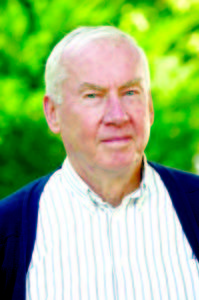Small World: Saudi Arabia and Iran — A primer
By Henry Precht
BN Columnist
If the Middle East needed to add yet one more conflict, it was certainly not be the clash between Saudi Arabia and Iran. This rivalry, which is geo-political and economic in its ramification, is at heart sectarian: Sunni vs. Shia. It’s hardly a new development. So, let’s look at the background of these two Islamic faiths.
It all started with the death of the prophet Mohamed in the 7th century. He left no designated successor. The larger part of his community thought the next leader should be selected by consensus. A smaller group thought power ought to pass by inheritance and the rightful heir was Ali, Mohamed’s cousin and son-in-law. They were known as Shia or “partisans of Ali†in Arabic. As Islam spread and internal tensions grew, leaders were assassinated and power soon passed to Ali. He too was murdered and his two sons, Hassan and Hussain, fell in battle. The split deepened between minority Shia led by their imams and the majority, orthodox Sunni led by their caliph. Shia faithful annually mourn their martyrs in processions and passion plays
As Sunni Islam spread from Spain to Indonesia, the Shia were strong in a few places, notably Iran and Iraq. The Shia went up to their 12th imam, who disappeared and is to return on judgment day. In both branches, leadership without hierarchy is filled by men admired for their scholarship. The Sunni caliph, was the property of the most powerful secular force. The title passed from Egypt to the Ottoman sultan, where it lasted until abolished by the Turkish reformer Kamal Ataturk in 1924.
With some violent eruptions, the two branches lived in tolerant peace for centuries. Neither is monolithic; both have factions. There was intermarriage. During my six years living in Egypt (90% Sunni) and four in Iran (95% Shia), I never knew any tensions between the two branches.
But then, enter the Wahabi sect, a strict fundamentalist group of Sunnis who have great influence in Saudi Arabia. They have financed schools in the kingdom and around the region. Many prominent terrorists are graduates. The Wahabis regard the Shia as heretics and wage ideological war against them.
One of the places were Shia are numerous is in eastern Saudi Arabia on top of oil reserves. Constituting 10-15% of the kingdom’s 20 million, they are a second-class community; their leaders are regularly put down. A prominent Shia divine, Nimr al-Nimr, was beheaded the other day, setting off an Iranian mob that burned the Saudi embassy in Tehran. The Iranians broke up the attack (a bit late) and expressed regret to the United Nations. Not enough for the Saudis who broke relations and pressured its neighbors to follow suit.
Before this incident Saudi Arabia and Iran had engaged in a proxy war in Syria where the kingdom has funded opposition groups — some terrorists — fighting Bashar al-Assad while Iran has supported him. Yemen — the poorest Arab nation — is the scene of another Saudi effort to combat Iranian influence (which Iran denies it has). Saudi planes, using U.S.-provided weaponry and intelligence are diligently and cruelly destroying the country.
Still more: with the price of oil at record lows, the Saudis find themselves hard pressed to meet rising costs at home — largely subsidies to buy off potentially rebellious youth. The kingdom also believes it must keep a large flow of oil to markets to maintain market share and limit gains to its enemies Iran and Russia.
And more: Saudi Arabia is worried that its patron and chief defender, the United States, is dropping its leadership role in the region and making sweet with Iran. The U.S.-Iran nuke deal is its main evidence. Whether Washington will be able to persuade Riyadh to participate with Tehran in peace talks on Syria remains to be seen. Meanwhile, the killing and march of refugees to Europe continues.
And finally: The Saudi king, Salman, who has been on the throne for about a year, is said to suffer from dementia. His 30-year-old son, the defense minister, seems to be calling the (inexperienced) shots and transforming the kingdom from a quiet, but effective player on the world stage to a tragic — or is it comic — actor little appreciated by other members of the royal family.
This is the situation that Washington confronts. The administration has to be especially careful with the world’s largest energy source with its $650 billion in the bank. Change seems inevitable — as it has for many years. Can it be managed smoothly?
Henry Precht is a retire Foreign Service Officer.


